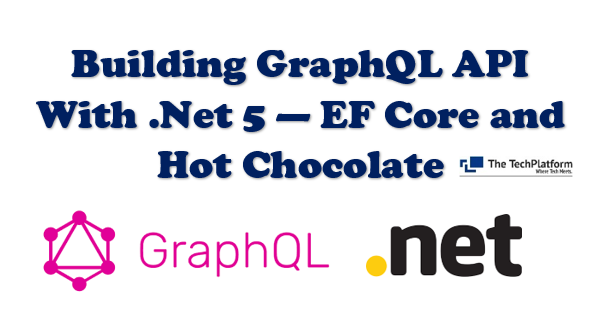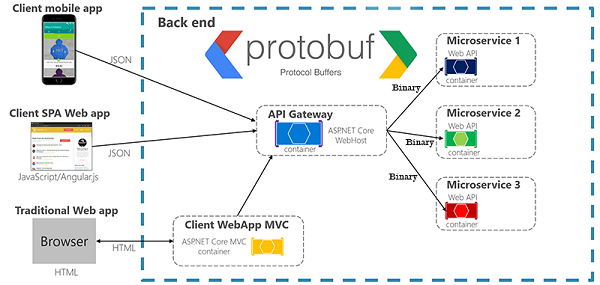REST vs gRPC vs GraphQL: The Key Difference
- The Tech Platform

- Jun 29, 2022
- 3 min read

REST (Representational State Transfer)

REST is one of the most used API technology among the three options. REST uses various HTTP verbs such as GET, POST, PUT, DELETE to retrieve, transfer, modify and erase the data respectively. It resends the requests if needed and the information necessary for the server to process that request thus in REST API the server never stores the client state thus it is stateless. HTTPs native caching headers are used for implementing caching as REST requires requests to be cacheable whenever possible.
Advantages of REST
It is a great fit if a domain can be easily described as a set of resources using standard HTTP protocol which enables CRUD operations.
If your API has stable usage patterns and has geographically distributed traffic then REST enables intermediate proxy caching.
It is intuitive for the consumer because it is directly built upon the semantics of HTTP.
Disadvantages of REST
It is not fit for domains where mapping concepts to resources is hard and the scalability of REST is limited and bi-directional streaming isn’t possible at all.
In the case of nested entities, you may need to make multiple requests
When to Choose?
REST is the best choice if you do not have any specific requirements. For example, if you are new to development, using REST is the perfect match since it has a shallow learning curve. In addition, it has a large ecosystem, and you can easily find solutions to any problem you face. You can also use REST when dealing with many requests and limited bandwidth. You can use its caching support to improve performance in such situations.
gRPC (Remote Procedure Call)

gRPC is a new version of an old method known as Remote Procedure Call (RPC). It was developed by Google and made Open-Source later. It works based on contracts and negotiations that are defined by the relationship between the Server and the Client rather than by the Architecture. It is lightweight and requires few resources. This makes it a good solution even for low-powered situations. It uses Protocol Buffers (Protobuf) to serialize Structured Data and facilitate effective communication. gRPC is Open Source, hence, you can use it for free. It is suitable where the Data Requester wants to preserve resources. It is mostly used in IoT devices like Smart Light Switches, Voice Controllers, Cameras, and Smoke Alarm Locks
Advantages of gRPC
gRPC is mainly focused on performance which is mainly enabled by the usage of HTTP/2 as the transport layer.
Collecting data from multiple low-resource agents such as cameras, sensors, etc is done with ease.
It provides both unidirectional and bidirectional streaming based on HTTP/2 streaming
Disadvantages of gRPC
You need an experienced developer to use gRPC.
gRPC requires HTTP/2 which is not supported by browsers because of which it is not a native solution for customer-facing web applications
When to Choose?
gRPC is an excellent option for communication between devices with low resources. For example, IoT devices, smart devices, and cameras can benefit from using gRPC since it optimizes the performance using minimum resources. gRPC can also be used in microservices architecture to handle communications between services since it can communicate with services written in different languages.
GraphQL (Graph Query Language)

GraphQL is a system for requesting data whose focus is on pinpointing requests and delivering what is required. It is a Client-driven approach that makes it unique from other APIs. Instead of using the normal Server to Client Model, it lets the Client decide how everything is handled. The Client decides the type of data that is wanted and the preferred format for the data. GraphQL doesn’t over fetch data, but it returns exactly what is requested by the Client. It is also Cross-platform, with the ability to support more than a dozen languages including Perl, PHP, Java, Python, and others
Advantages of GraphQL
GraphQL allows fetching and delivering data that is required by the client which reduces data transfer overhead.
One can easily deal with uncertainties because one can profile real queries to gradually build a picture according to the client’s requirements.
It is best for diverse data sets and easy-open querying can be done.
Disadvantages of GraphQL
Communication between services is very much limited.
GraphQL breaks intermediate proxy caching which matters if the client and server are geographically distant.
When to Choose:
GraphQL is an excellent choice for querying databases with many records. You can eliminate the over-fetching with GraphQL and only retrieve the necessary data in specific formats to increase the application performance. Also, GraphQL is well suited for situations where you need to aggregate data from multiple resources. You can also use GraphQL when you do not entirely understand how the client uses the API.
Difference Between REST, gRPC and GraphQL
| REST | gRPC | GraphQL |
Architecture | REST does not have a concrete API framework or specification due to which there is a lot of space left for interpretation we can say it has a broad architectural style. | gRPC’s Architecture is based on the concept of Contracts. In this architecture, negotiation is defined by the Client-Server Relationship instead of the Architecture itself. | GraphQL has a unique approach to the Client-Server Relationship and it is like a reversal of the traditional model. |
Protocols | It uses the HTTP 1.1 protocol in which each component is a resource that is accessed by a common interface using HTTP standard methods. There are mainly four HTTP methods that are commonly used in REST-based architecture | It uses the HTTP/2 Protocol which is capable of supporting Bidirectional and Multiplexing. It is an improvement of the HTTP/1 Protocol. It also uses a binary protocol rather than JSON | It uses the HTTP Protocol. It can be accessed via a simple POST API or via the playground. It also offers different names such as Query and Mutation of CRUD operation |
Supported Language | Multiple programming languages are supported by REST which gives users the flexibility to choose between languages including JavaScript, Python, PHP, and GO | gRPC has official libraries for most of the popular programming languages including Java, C#, C/C++, JavaScript, Go, PHP, Python, and Kotlin. This gives users the flexibility to choose the languages they are comfortable with. | GraphQL is also flexible when it comes to the supported programming languages. It supports more than a dozen languages including Perl, PHP, Java, Python, and others. Thus, users can also choose the programming language of choice. |
Speed | HTTP 1.1 uses a request-response model of communication. Since there are multiple requests they are served one at a time which slows the entire process | gRPC has a great focus on performance through a Compact Data Format, through the use of HTTP/2 as the transport layer, and fast encoding and decoding of messages. | GraphQL allows the Clients to request any number of Data Fields at a go. The response will be as fast as the speed of the slowest requested field. This means that users should optimize queries continuously based on usage patterns |
Use Cases | REST API is the popular web and cloud companies Facebook, YouTube, Twitter, and Google as it allows us to connect, manage and interact with cloud services flexibly | gRPC is used for large-scale microservice communication, for example, Google designed gRPC which was based on an internal project Stubby for the internal framework | GraphQL is used for dashboards where an application fetches data from multiple sources such as logging services, backends for consumption stats, and third-party analytics tools to capture end-user interactions |
The Tech Platform




Comments